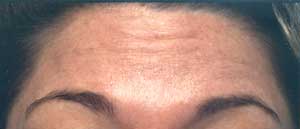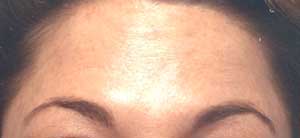Botox Cosmetic


The urge for perfection is endless. In the pursuit for flawless skin sans wrinkles and age lines, women resort to creams, facelifts and anti-aging treatments. The elasticity and vitality of the skin is sought to be retained and improved. Botox treatment is the latest buzzword on the skin treatment scene and seems to be taking the beauty world by storm. Let us understand what this procedure involves, its side effects and ramifications on the health of the woman.
Botox cosmetic
Botox is the brand name for Botulinum Toxin type A. It is a protein complex produced by the bacterium 'clostridium botulinum' - the same bacterium that causes the form of food poisoning known as botulism. Botox, however, is a purified form of this bacterium and was developed by dermatologists in 1980 to treat muscle disorders such as uncontrolled blinking and was later put to cosmetic use for the first time in 1987.
Botulinum toxins were first researched in the late 1960s to treat neurological disorders. Botox was approved by the FDA in 1989 to treat eye muscle disorders such as blepharospasm, uncontrollable blinking, and strabismus, crossed eyes. In 2000, it was approved to treat cervical dystonia (a disorder that causes severe neck and shoulder contractions).
As an unusual side effect of the eye disorder treatment, doctors observed that Botox softened the frown lines between the eyebrows. Botox has been used in aesthetic surgery since the early 1990s. It is being increasingly used to eliminate mild and severe frown lines for a short time.
Botox procedure
When Botox is injected through the skin into the muscle with a needle, it keeps the muscle from contracting. Because of this temporary paralysis, wrinkles become less obvious. A trained doctor will inject small amounts of Botox into a small part of the muscle to render it immobile. The horizontal wrinkles of the forehead, the vertical 'frown' wrinkles of the brow (between the two eyebrows) and crow's feet beside the eyes are the areas best suited to Botox cosmetic.
Botox procedures are currently being used by physicians to treat facial wrinkles other than those specified by the FDA. Consumers should be aware of this. The safety and effectiveness of Botox injections into other regions of the face and neck, alone or in combination with the frown-lines region have not been clinically evaluated.
Small doses of botox are injected directly into the muscles of the face. Prior to injecting botox the doctor will first determine the area of injection based on the person's ability to move certain muscles in the brow area. An improvement in frown lines will be noticed within 3- 7 days and could last up to 4 months. However results may vary. Botox is approved for selling in single-use tubes. Each tube is made to be used only once and only for one patient.
Also, Botox needs to be used within 4 hours after the tube is opened. Using the tube more than once can spread germs. Treating more than one person with one tube goes against the product directions. Botox injections can be taken once in 4 months. Repeated usage could lead to thinning of muscles, which could produce possible side effects.
Botox injection
Botox injections are the fastest-growing cosmetic procedure in the cosmetic surgery industry. The American Society for Aesthetic Plastic Surgery (ASAPS) has noted its increasing popularity. In 2001, more than 1.6 million people received botox injections, an increase of 46 % over the previous year. Botox is being used primarily to treat frown lines, crow's feet, turkey neck and other wrinkles and fine lines that tend to accumulate over time.
Such wrinkles are telltale signs of aging and are acquired after years of squinting and frowning. Since these lines are the result of muscle contraction, they can be erased by rendering the muscle under the skin weak or inactive. Wrinkles that are caused by muscle contraction, such as frown lines, crow's feet, forehead creases and neckbands can be safely and successfully treated with Botox.
Botox side effects
Although there is no chance of contracting botulism from Botox injections, there are some risks associated with the procedure. If too much toxin is injected or if it is injected into the wrong facial area, a person can end up with droopy eyelid muscles that could last for weeks. This particular complication was observed in clinical trials. Other botox side effects are:
- Headache
- Flu like symptoms
- Temporary eyelid drop
- Nausea
- Squint/Double vision
- Twitching of eye
- Facial pain
- Redness at injection site
- Muscle weakness
Botox procedures are not recommended for those pregnant women or those suffering from neurological disorders. Possible allergies must also be looked into. A qualified dermatologist is the best person to administer botox treatments. This minimizes the potential for misuse. Botox treatment is resorted to by those who do not wish to face the risk of surgery and prefer being treated for a few minutes every three to four months. This non-invasive method of maintaining wrinkle free skin is popular since it doesn't leave unsightly scars too.
Top of the Page: Botox Cosmetic
Tags:#botox #botox cosmetic #botox injection #botox side effect and botox treatment
 Beauty
Beauty Facial Skin Care
Skin Care Essentials
Men's Skin Care
Beauty Control - Sunscreen
Sunburn Remedies
Natural Sunblock
Beauty Care Routine
Skincare Tips for Teens
Dry Skin Care
Asian Skin Care
Black Skin Care
Pregnancy Skin Care Tips
Oily Skin Care
Skincare For Aging Skin
Common Skin Problems
 Crow's Feet
Crow's Feet Hyperpigmentation
Melasma
Acne during Pregnancy
Back and Chest Acne
Adult Acne in Women
Excessive Sweating
Whiteheads
Cause Dark Eye Circle
Chapped Lips
Age Spot
Skin Cancer Symptom
Skin Care Treatments
 Chemical Skin Peels
Chemical Skin Peels Radio Frequency Skin Tightening
Electroporation Beauty Treatment
Home Remedies for Large Pores
Dermaplaning Benefits
Manuka Oil Benefits
Skin Needling
Cheek Fillers
Cosmetic Dermal Filler
Skin Lightening
Skin Exfoliation
Bamboo Massage
Dry Skin Brushing
Stretch Mark Removal
Freckle Removal
Rosacea Treatment
Skin Care Routine
Tretinoin Cream Benefits
Alpha Hydroxy Acid
Homemade Face Mask
Bath Salt Recipe
Tea Tree Oil
Wrinkle Cream
Almond oil Benefits
Jojoba Oil
Handmade Soap
Eye Creams
Facial Cleanser
Botox Cosmetic
Benefit of Aloe Vera
Shea Butter Benefit
Top of the Page: Botox Cosmetic
Popularity Index: 100,951

